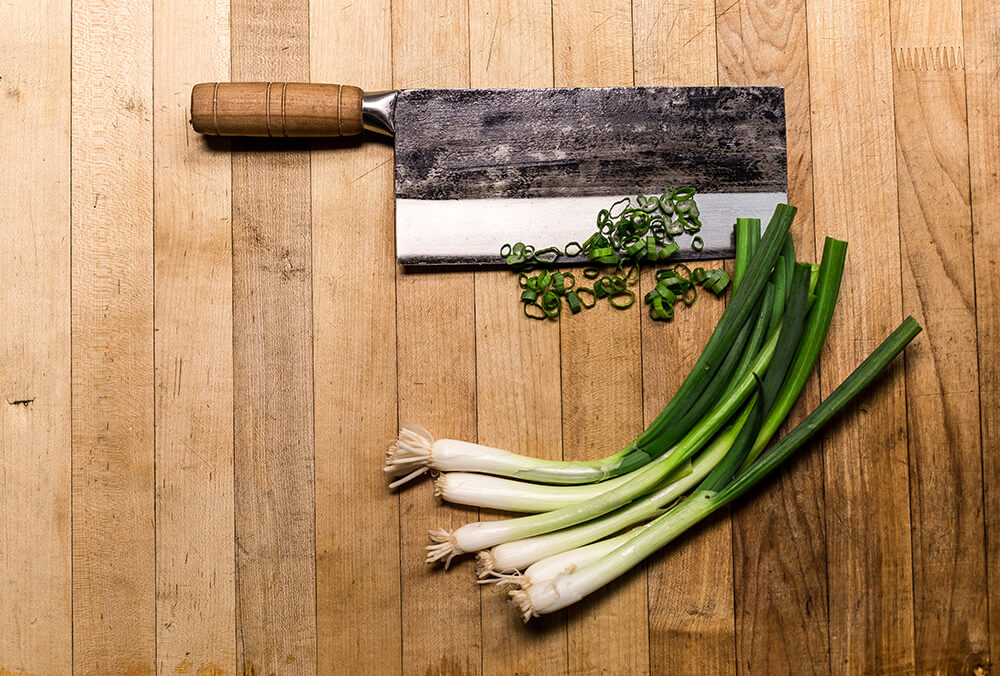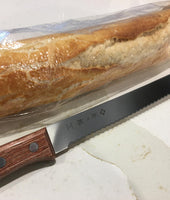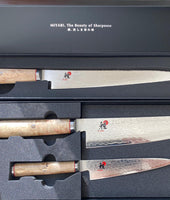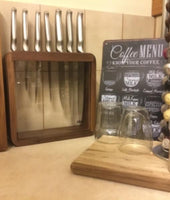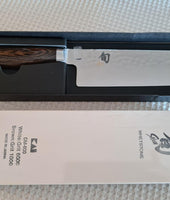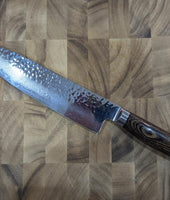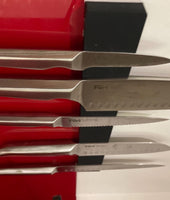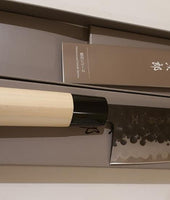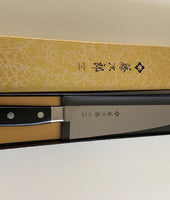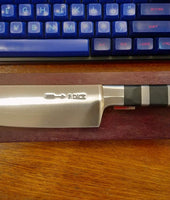Why Do You Need a Vegetable Knife In Your Kitchen?
Vegetables are indispensable in a healthy diet and you need the proper tools to prepare them to get the best out of them. You want to slice and dice your veggies, not rip and tear them to shreds! You can use any knife to cut vegetables, but if you want the best results, use a vegetable knife.
Vegetable knives are used for slicing, dicing, chopping, and cutting large and small vegetables. They generally measure between 5 to 7 inches. You can get any vegetable cutting knife online, but you have to know what type to buy depending on what you'll use it for.
Types of Vegetable Knives
Vegetable knives differ in look, design, and use. Here are the main types of vegetable knife.
The Nakiri Bocho
The Nakiri bocho is a Japanese-style vegetable knife. It is ideal for cutting vegetables into thin slices.
It features a straight blade which enables it to cut all through the vegetable to the cutting board without needing to be pushed or pulled horizontally. Nakiri bocho knife blades tend to be rectangular in shape, though some have a curved corner on the blunt side of the blade.
The Nakiri knife is double beveled, meaning the cutting edge has an angle on both sides of the blade. This makes it ideal for cutting straight slices.
The Miyabi 5000FCD Nakiri Vegetable Knife 17cm is a great Nakiri knife. It features 49 layers of steel treated to produce a stunning floral damask pattern. Each knife is hand-polished and finished. The bolster and the handle are seamlessly joined to ensure that no food and dirt get trapped in between. A black Pakkawood handle gives the knife a sleek look and is also comfortable to hold.
The Shun Kai Classic Nakiri Vegetable Knife Left-Handed 16.5cm is similar to the Miyabi Nakiri, but it is specially designed for users who prefer to use their left hand. It has a straight blade, spine, and edge, and is pushed rather than rocked when cutting vegetables. The handle has its D curve on the left side to allow it to fit comfortably into the curve of the left-hand fingers.
The Usuba Bocho
Usuba bocho is a vegetable knife similar to Nakiri bocho but with one major difference. While the Nakiri bocho knife is double-beveled, Usuba bocho is single beveled.
It is sharpened on one side only. This allows for a sharper blade, thinner, and more precise cuts. High-quality Usuba bocho blades even have a slight depression on the flat side for better performance. Usuba knives with the blade sharpened on the left-hand side are for left- hand use, while those sharpened on the right-hand side are for right-hand use.
Usuba bocho tend to be heavier than Nakiri bocho, and they also require the user to be more skilled. They are more likely to be found in a professional Japanese kitchen than a home. Unless that home belongs to a chef!
The F DICK Red Spirit Usuba Vegetable Knife 18cm is an example of an Usuba knife. This knife has a narrow blade spine and is ideal for slicing, cutting, and chopping vegetables, herbs, and fruits. It is not suitable for crushing herbs. It has the classical single-bevel blade of an Usuba and can be used by both left and right-handed people. Its blade is forged from high-quality stainless steel for long-lasting edge retention.
The overall weight of the handle is perfectly distributed for perfect balance, and the rounded and symmetrical shape of the blade makes it easy to control. It also has a rounded Asian non-slip handle made of high-quality plastic to give a firm grip.
The Paring Knife
A paring knife is a small, short vegetable knife used for peeling, cutting small vegetables, herbs and fruit. It can also be used for deveining prawns and shrimps. Paring knives are relatively small, ranging from 2.5 to 4.5 inches.
The Tojiro Hammered Paring Knife 9cm is a good example of a small, versatile vegetable knife. The knife features traditionally handcrafted blades with a VG10 core and an outer layer of 13 chrome stainless steel. The blade has a hammered finish, which prevents food from sticking to the blade.
The knife handle is D-shaped for a perfect fit in the hand and balance as well. It's also made of Japanese magnolia, which is smooth and water-resistant.
The Vegetable Cleaver
You could be excused for confusing a vegetable cleaver with a meat cleaver. They both have a rectangular blade. However, vegetable cleavers tend to be thinner and sharper. Vegetable cleavers fall into two categories:
- Japanese-style vegetable cleavers like the Usuba and Nakiri, which we've already mentioned.
- Chinese-style vegetable cleavers.
Chinese-style vegetable cleavers are heavier and more versatile-they can be used to slice boneless meat, mince, and crush herbs in addition to cutting large vegetables. They shouldn't be used for cutting through bones though- there's a meat cleaver for that.
The Shun Kai Limited Edition Engetsu Vegetable Cleaver 19.5cm is a great example of a vegetable cleaver. Its blade is made of hardened steel using ultra-modern technology. It features flexible, resistant VG2 steel blended together with hard VG10 steel to form a dual-core blade.
The resulting blade is razor-sharp and stays that way for a long time. The blade also features a beautiful Damask pattern which enables different zones of performance on the tip, middle, and heel of the blade. The heel and the tip have extra durability and toughness while the middle of the blade enables exact slicing and prevents food from sticking while cutting.
Its bolster is of stainless steel, and the blue/black Pakkawood handle has a stainless steel endcap with a logo. Pakkawood is water-resistant, making it long-lasting and hygienic. The handle's ergonomic design allows the knife to fit comfortably in your hand.
Final Words
Vegetables should look as good as they taste, and a vegetable knife will make sure of that. If you don't like your veggies, having a good vegetable knife is a great way to start eating them. Give one of the above-mentioned knives a try and you won't be disappointed!
